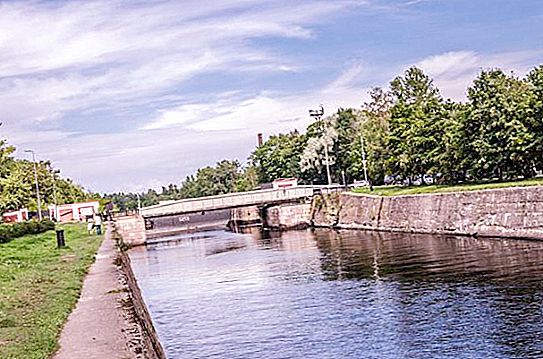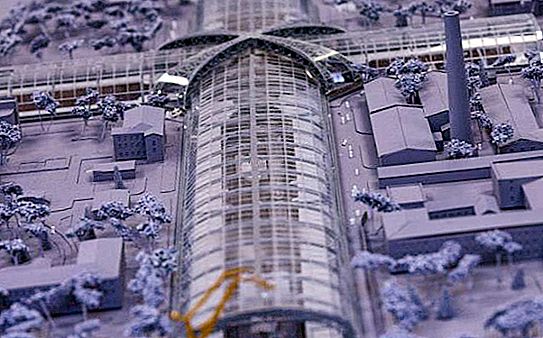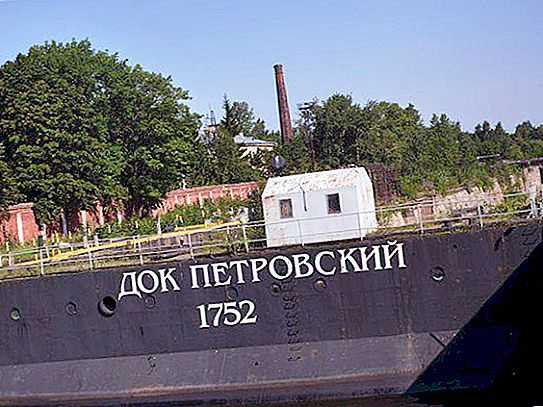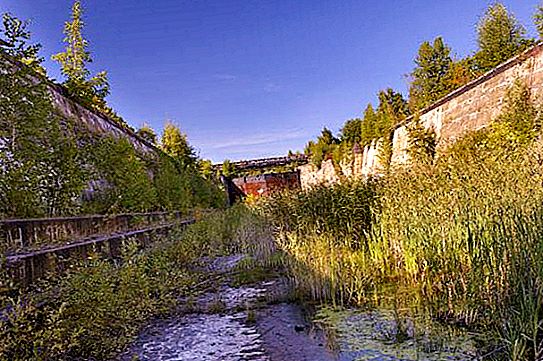The fortified city, which was laid by Peter the Great, is a symbol of the maritime glory of Russia. For a long time it was closed to the public. It was possible to get here only through special passes. More than twenty years have passed (1996) since the city was opened for tourists. But even today every visit to Kronstadt is full of mystery.
There are many unique monuments in the city that deserve the attention of tourists, but today we will go to the Petrovsky Dock in Kronstadt. This is a unique building, which today is fraught with many puzzles, even for modern researchers.

A bit about the city
Kronstadt is located on the Gulf of Finland, at an equal distance from the north and south coast. From St. Petersburg it is separated by about twenty-two kilometers by water. Bypass road is almost twice as much. The port city includes the island of Kotlin, several small islands of the Gulf of Finland, a dam - a complex of structures that is built against floods. He stretched for many kilometers. A ring road connects the two coasts of the bay along it.
Kronstadt today is part of St. Petersburg and has similarities with it: a humid climate, clean Baltic air, magnificent palaces, fortresses, marinas and temples. More than forty expeditions set out from this city on a world tour; the sailors of Kronstadt made fifty-six geographical discoveries.
Petrovsky Dock in Kronstadt: History
The beginning of the 18th century was marked by a war with Sweden, which was almost impossible to win without a strong fleet. Foreign ships came to Kronstadt and St. Petersburg. The need for their repair made Peter I think about building a special structure in Kronstadt. Petrovsky Dock was a real breakthrough in construction.
Peter I needed a dock in which it would be possible to launch a large vessel, or even better several, quickly pump out water, carry out repairs, and then put the vessel back on the water. The emperor did not want to build such a structure in a European way, since the analogues had a significant drawback: after the ship entered, the water was drained too slowly - more than a month.
Peter the Great was able to solve this problem: according to his own project, water flowed from the dock into the pool, located at a level lower than just one day. It was decided to implement this innovative idea in Kronstadt. The Petrovsky dock was built for a long 33 years, during which time four rulers were replaced.
Construction
In 1719, the construction of the Petrovsky Dock in Kronstadt was started. The canal began to build from the cathedral church of St. Andrew. The construction work involved soldiers from Parnu, Moscow, Vyborg. So that the local population does not move away from hard work, workers were distributed among the battalions.
Channel
For the first year, it was planned to dig a canal of 180 fathoms long, 15 fathoms wide and 2 fathoms in depth. About three thousand people were employed in these works. But there were not enough materials and people, and the construction was delayed. Then the commissar P.N. Krekshin addressed the emperor. He asked to entrust him with the construction of the canal, offering to deepen it to 4.5 fathoms and expand to 16.

The channel was scheduled for delivery in May 1721. In case of disruption of the work schedule, Krekshin was responsible not only for all the money spent, but also risked losing all his movable and immovable property. During the construction of the canal, unforeseen difficulties arose: it was necessary to transfer many buildings, often with the intervention of the emperor. Nevertheless, by 1722 the canal was dug, and by this time work was underway to strengthen its walls. This ended the Petrine era of the dock in Kronstadt.
The fate of the dock
Unfortunately, Peter I did not see his brainchild. Its construction was still going on in the years 1724-1725. After the death of the emperor, construction work was rather sluggish, but did not stop completely. In 1732, a commission was formed, headed by Major General Luberas, to inspect the canal. The general proposed to deepen and expand the Petrovsky dock in Kronstadt, in order to further accelerate the discharge of water from the docks. His idea was supported and work was begun.
The walls of the canal were hewn. But, the construction, which I. von Luberas planned to complete in three years, stretched out for another fifteen years.
Channel opening
They opened the canal at the end of July 1752. The solemn event was attended by Empress Elizabeth Petrovna. She personally launched the gateway mechanisms. A triple salute burst out of 1331 guns standing in the harbor of the squadron. Major General received the Order of St. Andrew the First-Called from the hands of the Empress.
In 1774, on the banks of the Petrovsky Dock in Kronstadt, they began installing the first steam engine in Russia to pump water, which was delivered from Scotland. Installation lasted almost two years. After putting this wonderful machine into operation, it became possible to drain the dock pool in nine days. But what is especially interesting is the life of this device. The steam plant has served faithfully for more than 75 years.
Petrovsky Dock in Kronstadt: description
Unique, as they would say in our time, innovative for its time, a dry dock stretches for more than two kilometers. The length of the repair channel is almost four hundred meters, the width is about thirty meters, and the depth is about twelve. Once the dock could take up to five ships at a time, which was the envy of many European shipbuilders.
The amazingly even masonry of the walls over three hundred years has been perfectly preserved, although one cannot but admit that the impact on it of the water was enormous. The central mechanism of the dock - six double lock gates - has survived to this day. Interestingly, the water retention and discharge system, which was installed in 1747, worked normally even in the early 2000s. The Petrovsky Dock pool in Kronstadt today is a decoration of the city, but the dock structures, unfortunately, are in poor condition, although they look pretty impressive.

Experts say that metal must work in order to live. And the Petrovsky Dock hermetic seals were last opened ten years ago. The mechanisms that had worked before for nearly a hundred years have become unusable. A drawbridge, of the Petrine era, is thrown over the canal, which is intended to enter the dock, and at the beginning of it a wooden lighthouse rises.
Pay attention to the rails of the crane tracks - these are the remains of the cranes that used to work here. They were dismantled recently (2011) by order of the governor. Then the city authorities promised to begin landscaping and to turn the abandoned Petrovsky Dock in Kronstadt into a museum. In the meantime, tourists can inspect the building only from the outside.
Will there be an underwater museum?
Petrovsky Dock urgently needs to be rescued. Restorers, historians, and the city administration agree with this. When there was a proposal to make an underwater museum in ancient buildings, at first it seemed fantastic. To do this, it is necessary to restore the granite walls, restore the mechanisms, fill the dock with water and create an imitation of the seabed.
The project also has an important scientific component: now experts are aware of two hundred ships of all eras, the remains of which rest on the Baltic bottom. No one knows how they will behave during underwater cleaning and conservation, since there is no such experience in the world yet.

It is planned to cover the dock with a glass dome, lay transparent galleries along the walls and the bottom: visitors will have the opportunity to stand a dozen meters from unique exhibits. In one of the channels, a real shipyard of the Petrine era should appear, in which ancient technologies will be studied and mastered.
While these ambitious plans have not been implemented, nevertheless, a walk along Kronstadt to the Petrovsky dock will give you pleasure.







